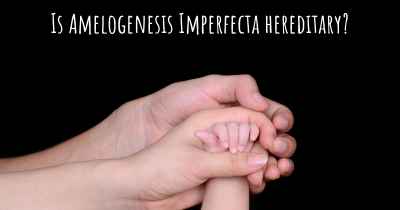What is the history of Amelogenesis Imperfecta?
When was Amelogenesis Imperfecta discovered? What is the story of this discovery? Was it coincidence or not?

Amelogenesis Imperfecta: A Brief History
Amelogenesis Imperfecta (AI) is a rare genetic disorder that affects the development of tooth enamel, resulting in abnormal tooth structure and appearance. The condition was first described in the scientific literature in the early 20th century, but its history can be traced back even further.
Early Observations and Classification
The earliest known cases of AI can be found in ancient Egyptian mummies, where teeth with enamel defects have been discovered. However, it wasn't until the 19th century that the condition was formally recognized and classified. In 1848, a French dentist named M. Delabarre described a case of enamel hypoplasia, a term used to describe the incomplete development of tooth enamel. This marked the beginning of the scientific understanding of AI.
Advancements in Understanding
In the early 20th century, several researchers made significant contributions to the understanding of AI. In 1910, Dr. Alfred Kantorowicz, a German dentist, coined the term "Amelogenesis Imperfecta" to describe the condition. He classified AI into three main types based on the severity of enamel defects: hypoplastic, hypocalcified, and hypomaturation.
Genetic Discoveries
It wasn't until the latter half of the 20th century that the genetic basis of AI began to be unraveled. In the 1970s, researchers identified the first genetic mutations associated with AI. These mutations were found in genes responsible for the production of enamel proteins, such as amelogenin, enamelin, and ameloblastin. These discoveries provided crucial insights into the molecular mechanisms underlying AI.
Subtypes and Classification Systems
Over time, researchers have identified various subtypes of AI, each with its own distinct characteristics. In 1992, a classification system known as the Witkop classification was proposed, which categorized AI into 14 different subtypes based on clinical and genetic features. This classification system has been widely used in research and clinical practice.
Treatment and Management
Historically, treatment options for AI were limited and focused on managing the symptoms rather than addressing the underlying cause. Dental interventions such as crowns, veneers, and bonding were commonly used to improve the appearance and function of affected teeth. However, advancements in dental materials and techniques have led to more effective and long-lasting treatment options.
Recent Advances and Future Directions
In recent years, significant progress has been made in understanding the genetic basis of AI. With the advent of next-generation sequencing technologies, researchers have identified several new genes associated with AI, expanding our knowledge of the condition. This has paved the way for potential gene therapies and targeted treatments in the future.
Conclusion
Amelogenesis Imperfecta has a rich history that spans centuries. From early observations in ancient Egyptian mummies to the modern genetic discoveries, our understanding of this condition has evolved significantly. Ongoing research continues to shed light on the underlying mechanisms of AI, offering hope for improved diagnosis, treatment, and management of this rare genetic disorder.








